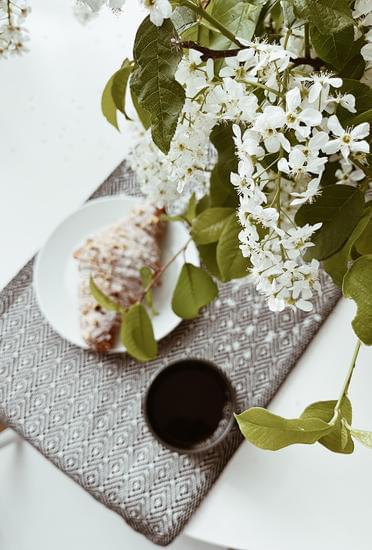The 1940s was an era filled with distinct charm and style when it came to home decor. From the war years to the post-war boom, the homes of this era were characterized by a unique blend of nostalgia and optimism. In this article, we will take a journey back in time to explore how homes were decorated in the 1940s, immersing ourselves in the iconic elements, popular color palettes, signature furniture pieces, and decorative details that defined this era.
Setting the scene for our exploration, it is essential to understand the historical context of the 1940s. This decade was marked by significant events such as World War II and its aftermath, shaping not only global history but also influencing home decor trends. Understanding this backdrop provides a deeper appreciation for the choices made in decorating during this time.
Iconic elements of 1940s decor styles encompassed both practicality and aesthetics. From streamlined designs influenced by war efforts to nostalgic touches reminiscent of simpler times, each aspect played a role in creating homes that exuded both functionality and beauty. Exploring these key features will give us insight into how homeowners of the 1940s achieved their desired ambiance.
Join us on a journey through time as we delve into textiles and patterns that defined 1940s homes. From bold prints to delicate florals, fabric choices played a crucial role in creating an inviting atmosphere within these spaces. Additionally, uncovering art and accessories will unveil the decorative details and artistic touches that added character to these homes.
Throughout this article, we will examine not only what made up 1940s home decor but also explore why these design choices were popular at the time. By studying real-life examples of 1940s homes and their decorative makeovers, we can gain inspiration for incorporating vintage charm into modern interiors today. So let’s step back in time to discover how homes were decorated in the nostalgic charm of the 1940s.
Setting the Scene
The 1940s was a decade marked by significant historical events and cultural shifts, which greatly influenced the style and design of homes during this time. As World War II raged on, homes became a sanctuary from the chaos outside, with people seeking comfort and stability in their interiors. This section will provide a historical overview of the 1940s, setting the scene for understanding the context in which home decor evolved.
The Impact of World War II
One cannot discuss the 1940s without acknowledging the profound impact of World War II on all aspects of life, including home decor. With many countries at war and resources scarce, there was an emphasis on functionality and practicality in design. As men were drafted into military service, women took on new roles in society, resulting in changes in household dynamics and interior design preferences.
Rationing and Material Shortages
During the war years, rationing measures were implemented to ensure that limited resources were allocated fairly. This meant that materials such as metal, rubber, and even fabric were in short supply. As a result, furniture designs became more streamlined and economical. Upholstered furniture often featured removable cushions to conserve fabric or used alternative materials like woven sea grass or sisal.
Patriotic Influence
The patriotic spirit of the 1940s was evident not only on the battlefields but also within homes. American flag motifs or colors were commonly incorporated into home decorations as a display of solidarity with troops overseas. People adorned their walls with war bond posters or framed photographs of loved ones serving in the military. The idea of “making do” with what one had extended beyond material possessions and became symbolic of an entire generation’s resilience during challenging times.
Understanding this historical context provides valuable insights into why certain design choices were made during this era. From resourcefulness to patriotism, these influences shaped the distinctive style and charm of 1940s home decor. Moving forward, we will delve deeper into the specific elements and features that defined this iconic era.
Iconic Elements
The 1940s was a fascinating decade for home decor, characterized by its unique and iconic elements. In this section, we will delve into the key features that defined 1940s decor styles.
One of the most prominent features of 1940s decor was its emphasis on functionality and practicality. With World War II raging during this time, there was a focus on conserving resources and making do with what was available. This led to an increase in multipurpose furniture and versatile designs that maximized space.
For example, sofas and chairs often had built-in storage compartments, allowing homeowners to make the most of limited living spaces. Additionally, collapsible furniture such as folding tables and nesting stools became popular due to their convenience and space-saving qualities.
Another hallmark of 1940s decor was a sense of nostalgia and romanticism. Many homes were decorated in a traditional or vintage style, drawing inspiration from earlier periods like Art Deco or Victorian eras. Ornate detailing, rich wood tones, and curved silhouettes were common in furniture pieces during this time.
Wallpaper with floral or damask patterns adorned walls, adding a touch of elegance to interiors. To complete the nostalgic vibe, decorative accessories such as vintage radios, crystal chandeliers, and antique sculptures were often displayed in homes.
Lastly, another key feature of 1940s decor styles was the incorporation of natural elements. As people sought solace during wartime uncertainty, there was a desire to bring the outdoors inside. Homes were filled with potted plants, floral arrangements, and landscape paintings depicting idyllic scenes. Natural materials like rattan and bamboo were also utilized in furniture pieces to create a tropical aesthetic reminiscent of vacation getaways.
Colors of the Era
During the 1940s, home decor was greatly influenced by the events and trends of the time. The popular color palette of this era reflected a sense of hope, patriotism, and nostalgia. Colors such as red, white, blue, and green were commonly used to create a sense of unity and pride.
One key color trend in the 1940s was the use of pastel shades. Soft pinks, pale blues, mint greens, and buttery yellows were often seen in homes during this time. These colors were considered soothing and comforting, providing a reprieve from the hardships of war.
Another prominent color scheme in 1940s home decor was the combination of black and white with vibrant accents. This contrast created a dynamic visual effect that added energy to interior spaces. Bold colors such as red, yellow, or deep blue were used sparingly to create focal points and add excitement to the overall design.
Aside from these popular color schemes, earth tones also had their place in 1940s home decor. Colors such as warm browns, muted oranges, and olive greens brought a natural touch into interiors. These earthy hues represented stability and resilience during uncertain times.
To incorporate the popular color palette of the 1940s into modern interiors, consider using pastels for a soft and feminine touch or opt for black and white with pops of bold color for a more dramatic look. Additionally, using earth tones can bring warmth and grounding to any space.
| Popular Colors | Description |
|---|---|
| Pastels | Soft pinks, pale blues, mint greens, buttery yellows |
| Black & White with Vibrant Accents | Contrasting black and white with bold pops of color |
| Earth Tones | Warm browns, muted oranges, olive greens |
Furniture and Layout
The furniture and layout of homes in the 1940s played a significant role in creating the distinctive style of the era. During this time, there was a shift towards more streamlined and functional designs that focused on efficiency and practicality. The influence of World War II and its impact on society can also be seen in the furniture choices and layouts of homes during this period.
One key characteristic of 1940s furniture was its simplicity and clean lines. This reflected the desire for practicality and functionality in a post-war society. Furniture pieces were often made from materials such as wood or metal, with minimal ornamentation or decorative embellishments. Popular furniture styles included mid-century modern, Scandinavian design, and art deco.
In terms of layout, homes in the 1940s typically had a strong emphasis on function and ergonomics. The open floor plan concept gained popularity during this time, with rooms flowing seamlessly into one another to create a sense of interconnectedness. This allowed for better communication between family members and facilitated multitasking in household chores.
To achieve this open layout, furniture was strategically placed to optimize space utilization. In living rooms, a common arrangement consisted of a sofa or loveseat paired with armchairs surrounding a coffee table or ottoman at the center. These seating arrangements were often arranged around a focal point such as a fireplace or television set. Bedrooms featured functional yet stylish bed frames accompanied by matching dressers, nightstands, and wardrobes.
Overall, the furniture and layout of 1940s interiors showcased an amalgamation of functionality, simplicity, and style that represented the societal values of the time. Today, these signature pieces and arrangements continue to inspire interior designers seeking to incorporate vintage charm into modern interiors.
Key Features
- Simplicity: Clean lines and minimal decorative details
- Functionality: Focus on efficiency and practicality
- Materials: Wood or metal used for furniture pieces
- Open Floor Plan: Rooms flowing seamlessly into one another
- Focal Point: Seating arrangements centered around a fireplace or television set
Textiles and Patterns
During the 1940s, textiles and patterns played a significant role in defining home decor styles. The choice of fabrics and designs were influenced by the prevailing trends and cultural events of the era. Let’s delve into the fabrics and designs that defined 1940s homes.
One prominent feature of textile choices in the 1940s was their durability and functionality. With World War II taking place during this time, there was a focus on practicality and conserving resources. Fabrics such as cotton, wool, and rayon were commonly used due to their durability and affordability. These materials were often used for upholstery, curtains, and bedding.
In terms of patterns, floral motifs were hugely popular in 1940s home decor. Brightly colored, large-scale floral patterns could be found on curtain fabrics, bedspreads, and even upholstered furniture. These cheerful designs brought a sense of cheerfulness and optimism to homes during challenging times.
Additionally, geometric patterns also had a strong presence in 1940s interiors. Geometric elements such as stripes or diamond patterns could be seen on everything from wallpaper to rugs to pillows. The clean lines and symmetry of these designs added a modern touch to traditional spaces.
To incorporate the textiles and patterns that defined 1940s homes into your own interior design today, consider the following tips:
- Choose fabrics that are durable yet comfortable for upholstery or window treatments.
- Look for vintage-inspired floral prints in curtains or bedding to bring a touch of nostalgia.
- Experiment with geometric patterns on accent pieces like throw pillows or rugs.
- Mix different patterns together for an eclectic yet cohesive look.
- Opt for colors popular during the era like pastels or muted tones.
By incorporating textiles and patterns that defined 1940s homes into your own interior design, you can bring a sense of nostalgia and vintage charm to your modern space. Whether it’s through floral fabrics, geometric patterns, or a combination of both, these elements can add character and warmth to any home.
Art and Accessories
The 1940s was a time of innovation and creativity in home decor, with art and accessories playing a crucial role in defining the aesthetic of the era. In this section, we will delve into the decorative details and artistic touches that were popular during this time period.
One of the key characteristics of 1940s decor was the incorporation of various types of artwork into home interiors. Paintings, sculptures, and framed prints were widely used to add personality and charm to living spaces. Artwork often depicted scenes from nature, still life compositions, or portraits, reflecting an appreciation for realism and traditional styles. Additionally, cityscape paintings became increasingly popular as urbanization continued to shape the world.
Many homes also showcased handcrafted accessories as a way to add uniqueness and individuality. Ceramics, pottery, and glassware were common decorative items found in 1940s interiors. These pieces were often displayed on shelves or mantelpieces, adding visual interest and color to rooms. Artistic craftsmanship was highly valued during this time period, with many homeowners actively seeking out handmade objects to showcase in their homes.
In terms of textiles and patterns, the 1940s saw the popularity of floral motifs in drapery fabrics, upholstery fabrics, wallpaper designs, and even rug patterns. Bold prints like large-scale florals or geometric shapes were particularly favored during this era. Floral arrangements were also commonly seen as decorative touches in homes, adding pops of color and natural beauty.
| Art and Accessories | Data |
|---|---|
| Popular Types of Artwork | Paintings, sculptures, framed prints |
| Common Decorative Accessories | Ceramics, pottery, glassware |
| Popular Textile Patterns | Floral motifs, geometric shapes |
The decorative details and artistic touches of the 1940s continue to inspire and captivate modern homeowners who desire to incorporate vintage charm into their interiors. By embracing the use of artwork and handcrafted accessories, as well as incorporating bold floral patterns into textiles, one can recreate the nostalgic appeal of this era while putting a contemporary spin on it.
The key is to strike a balance between vintage and modern elements in order to create a unique and timeless space that pays homage to the allure of 1940s home decor.
Popular Themes and Influences
The popular themes and influences of the 1940s played a significant role in shaping home decor during that time. This era was marked by both global events, such as World War II, and cultural shifts, which greatly impacted the styles and trends seen in homes across the country.
One notable influence on 1940s home decor was the wartime effort. With resources being directed towards the war, there was a sense of frugality and practicality that permeated interior design. Waste was discouraged, and this mindset translated into functional yet stylish decor choices. For example, minimalistic furniture with clean lines became popular, reflecting a more streamlined approach to design.
Another major influence on 1940s home decor were Hollywood films and glamour. The movie industry flourished during this era, and people turned to movies as an escape from the hardships of the war. Hollywood stars like Judy Garland and Audrey Hepburn became style icons, and their luxurious lifestyles influenced the way people decorated their homes. Art deco elements often found in glamorous movie sets were incorporated into interiors, such as mirrored accents, metallic touches, and geometric patterns.
Furthermore, the 1940s saw a resurgence of interest in traditional craftsmanship and folk art. As mass production became more prevalent in society, many sought to reconnect with simpler times by incorporating handcrafted items into their homes. Quilts, wooden furniture with intricate carvings, pottery pieces, and handwoven textiles became popular additions to 1940s interiors.
To sum up, the themes and influences that shaped 1940s home decor encompassed notions of frugality rooted in wartime efforts, Hollywood influence leading to glamorous aesthetics ,and a revival of traditional craftsmanship and folk art which added charm to these spaces. By understanding these influences we can gain insight into how homes were decorated during this nostalgic era.
| Influence | Description |
|---|---|
| Wartime Effort | Inspired functional and practical design choices |
| Hollywood Influence | Brought glamour and luxury into homes through art deco elements |
| Traditional Craftsmanship and Folk Art | Revived interest in handcrafted items, adding charm to interiors |
Case Studies
In order to truly understand the charm and character of 1940s home decor, it is helpful to examine real-life examples of homes from that era. By exploring these case studies, we can see how homeowners embraced the design trends of the time and how they incorporated them into their own unique spaces.
- The Smith Residence: A Perfect Blend of Art Deco and Mid-Century Modern The Smith residence is a prime example of a 1940s home that seamlessly blended two popular design movements of the era – Art Deco and Mid-Century Modern. The exterior facade showcases sleek lines, geometric shapes, and bold colors that are characteristic of the Art Deco style.
Inside, the home features open floor plans, streamlined furniture, and natural materials such as wood and leather that are indicative of Mid-Century Modern design.
The furniture is complemented by vibrant patterns in textiles like curtains and upholstery, adding a touch of whimsy to the space. The Smith residence demonstrates how homeowners in the 1940s embraced both contemporary styles and elements from earlier decades to create a truly unique aesthetic. - The Johnson Cottage: Cozy Country Charm with Floral Accents The Johnson cottage exemplifies the cozy country charm that was prevalent in 1940s home decor. This quaint bungalow is adorned with floral accents throughout, from wallpaper featuring delicate roses to curtains adorned with cheerful prints. The color palette consists mainly of soft pastels such as baby blue and blush pink, which create a serene atmosphere.
Vintage furniture pieces are lovingly arranged into inviting seating areas that encourage relaxation and conversation. The use of natural textures like wicker and linen further enhances the cottage-like ambiance. By exploring this case study, we can see how homeowners in the 1940s brought nature indoors through their choice of patterns, colors, and materials. - The Thompson Apartment: Streamlined Elegance with Artistic Flair The Thompson apartment showcases the streamlined elegance that was popular in 1940s home decor. This urban dwelling features clean lines, minimal ornamentation, and a focus on functionality. The furniture is sleek and sophisticated, often made from materials like chrome and glass.
Artistic touches can be found throughout the space, such as abstract paintings and sculptural statement pieces. Despite its minimalist aesthetic, the Thompson apartment is far from sterile – pops of color are introduced through vibrant accessories like throw pillows and rugs. This case study demonstrates how homeowners in the 1940s embraced simplicity while still incorporating artistic elements into their living spaces.
By examining these real-life examples of 1940s homes and their decorative makeovers, we can gain a deeper appreciation for the design choices of this era. From blending different design movements to embracing floral patterns or streamlined elegance, these case studies highlight the versatility and creativity that characterized 1940s home decor. These examples serve as inspiration for those looking to incorporate a vintage touch into their own modern interiors while staying true to the timeless appeal of 1940s design principles.
Revisiting the 1940s Today
As time goes by, many people find themselves drawn to the nostalgia and charm of past eras when it comes to home decor. The 1940s, in particular, holds a special place in people’s hearts as it represents a time of resilience and hope amidst the backdrop of World War II. If you’re looking to bring a touch of vintage charm into your modern interior, here are some tips and ideas inspired by 1940s home decor.
Embrace Retro Furniture
One of the defining features of 1940s interiors was the furniture. To incorporate vintage charm into your modern interior, look for furniture pieces that have a retro flair. Choose items with clean lines and curves that were popular during this era. A classic wingback chair or a cozy loveseat can instantly transport your space back in time. Keep in mind that comfort was key during this period, so opt for furniture with plush upholstery and soft cushions.
Go for a Neutral Color Palette
The color palette of the 1940s was predominantly neutral with pops of vibrant colors. To create an authentic 1940s vibe in your modern interior, paint your walls in shades like cream, beige, or light gray. Add touches of color through accessories such as throw pillows, curtains, or artwork. Mix in some bold hues like red, blue, or green to capture the essence of this era while still maintaining a balanced aesthetic.
Add Vintage Patterns
Patterns were an integral part of 1940s home decor. Embrace vintage patterns such as floral prints, polka dots, stripes, or geometrics in your textiles and furnishings. Incorporate these patterns through curtains or drapes, area rugs, upholstery fabrics for chairs or sofas, and even wallpaper. Mixing and matching different patterns can create a whimsical yet cohesive look that will instantly transport you to the 1940s.
Accessorize with Retro Art and Decor
To truly capture the essence of the 1940s, pay attention to the smaller decorative details. Look for vintage-inspired artwork, such as posters or prints from this era, and display them on your walls. Add some retro-style lighting fixtures, mirrors with intricate frames, or decorative wall clocks to enhance the overall ambiance. Don’t forget about adding some nostalgic touches like antique telephones or radios, old books, vintage-inspired cameras, or typewriters to complete the look.
Incorporating vintage charm into modern interiors is all about striking a balance between old and new elements. By embracing retro furniture pieces, using a neutral color palette with pops of vibrant hues, incorporating vintage patterns in textiles and wallpapers, and accessorizing with retro art and decor, you can create a space that captures the timeless appeal of 1940s home decor while still feeling fresh and stylish in today’s world.
Conclusion
In conclusion, exploring the home decor of the 1940s allows us to appreciate the timeless appeal that it holds. Despite being several decades old, the design elements and styles of this era continue to inspire and captivate us today. The charm of 1940s home decor lies in its ability to create a warm and inviting atmosphere while incorporating iconic features that make it unique.
Throughout this article, we have taken a journey into the past, uncovering the historical overview of the 1940s and examining the key elements that defined this era’s home decor. From the popular color palette to signature furniture pieces and arrangements, textiles and patterns, as well as decorative details and artistic touches, we have witnessed how each aspect contributed to the overall aesthetic of homes during this time.
It is fascinating to see how inspiration from various themes and influences shaped 1940s home decor. Whether it was Hollywood glamour or patriotism during wartime, these influences left lasting impressions on interior design choices. By highlighting real-life examples of 1940s homes and their decorative makeovers, we can see how homeowners today incorporate vintage charm into modern interiors.
As we revisit the 1940s in a contemporary context, it is clear that this era still has much to offer in terms of style and inspiration for our homes. Incorporating touches from this nostalgic time period can bring warmth, character, and a sense of history into our modern living spaces. The timeless appeal of 1940s home decor serves as a reminder that great design endures throughout generations and continues to capture our hearts even today.
Frequently Asked Questions
What design style was popular in the 1940s?
In the 1940s, a popular design style was known as Art Deco. This style emerged in the 1920s but continued to gain popularity throughout the following decades, including the 1940s. Art Deco was characterized by sleek lines, geometric shapes, and luxurious materials.
It often incorporated bold colors, symmetrical designs, and decorative motifs inspired by ancient civilizations and nature. The style reflected a sense of modernity and glamour that resonated with the cultural and social changes of the time.
What is 1940s decor called?
The decor style of the 1940s is often referred to as “vintage” or “retro.” This term encompasses different design influences from this era, including Art Deco mentioned earlier, as well as other styles like Mid-Century Modern and Hollywood Regency.
Vintage or retro decor from the 1940s typically features clean lines, organic forms, and a mix of traditional and modern elements. It may incorporate warm wood tones, metallic accents, bold patterns like stripes or polka dots, along with playful pastel colors.
What was the style of house in the 1940s?
In terms of housing architecture during the 1940s, there were several prevalent styles depending on geographic regions and personal preferences. One common style seen during this period was the Cape Cod house design. Cape Cod houses were inspired by traditional colonial homes in New England but had a more modest size and simplified form. They typically featured a central chimney, steep pitched roofs with gables, small multi-paned windows, clapboard siding, and sometimes decorative shutters.
Another popular style was Ranch houses (also known as Ramblers), which embraced a single-story layout with open floor plans and easy access to outdoor spaces such as patios or backyard gardens. These houses had low-pitched roofs with wide eaves and large windows that blurred indoor-outdoor boundaries. Overall, these house styles aimed to provide comfortable living spaces for families while reflecting the architectural trends of the time.

I’m thrilled to be your companion on this exciting journey through the world of home decor and design. With a passion for turning houses into homes and a keen eye for the finer details, I’m here to help you transform your living spaces into beautiful, functional, and meaningful havens.





